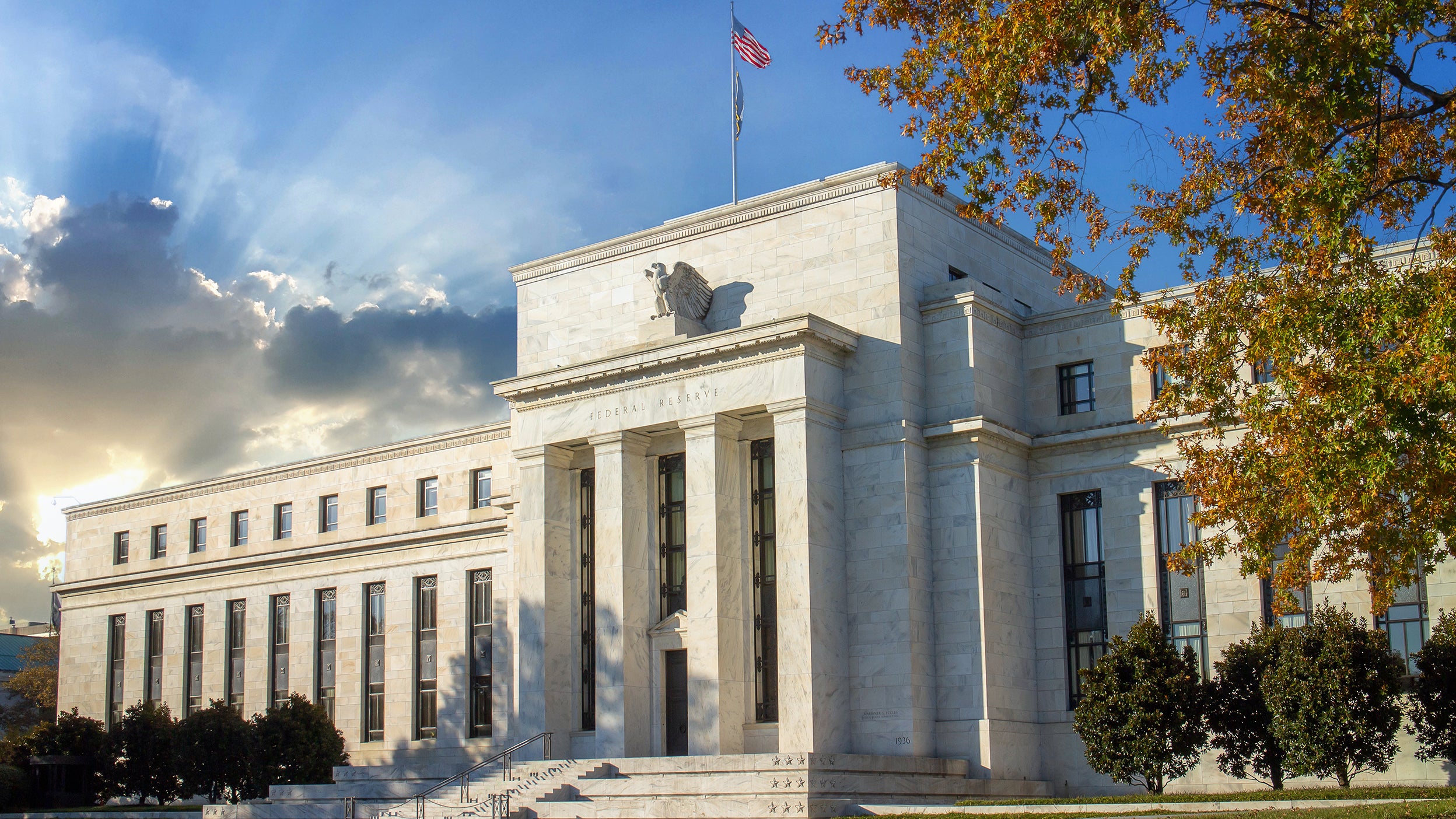
Markets and Economy
Above the Noise: Is inflation obsession overblown?
Is the hyperfocus on inflation warranted, should we be worried about the size of US debt, and do geopolitics negatively impact markets? Here are my straightforward answers.

Historically, investors have been better served adding to their equity portfolios at the start of conflicts rather than reducing exposure or simply staying the course.
How has the US stock market historically performed in the one year after the Fed ended its tightening cycle? We crunch the numbers.
It may not feel like it now, but this could become a concern if an economic slowdown results in the US Federal Reserve lowering interest rates.
As a market strategist, I’m often forced to grieve catastrophic events while simultaneously assessing the implications for financial markets. It feels coldhearted. Personally, it’s hard to care about something as trivial as short-term market movements while fellow citizens of the world are dealing with the horrors of war, terror, natural disasters, or whatever else. Nonetheless, the question of what it means for markets will be asked, and I need to be prepared with an answer. It’s part of the job.
Sometimes the stakes are higher for me than other times. I vividly remember in March 2011 waking to the news of the Japanese earthquake and tsunami. As luck would have it, I was scheduled to be on CNBC’s Squawk Box at 6:00 a.m. There wasn’t enough time. I wasn’t prepared with an answer. Frantically, I phoned a mentor of mine, woke him, and asked what it means for US markets. He responded by scolding me, asking me two short questions, and providing me with great advice:
“First, don’t ever call me at this time again! Question one: Does it change the trajectory of the US economy? Question two: Does it change how the US Federal Reserve will approach policy? If not, then go back to grieving.”
I’m afraid that the renewed violence in the Middle East will have us grieving for the foreseeable future. At the risk of sounding unsympathetic (which I could never be) I believe that the answers to my mentor’s timeless questions regarding yet another regional conflict are “no and no.” That is, unless there is a meaningful expansion of the war, resulting in a sustained rise in energy prices.
We start with three simple questions.
It feels late in the cycle, but the economy is remarkably resilient. I believe an economic downturn in the near term is unlikely.
These markets have been anticipating above-trend US growth. Interest rates are meaningfully higher since the beginning of the summer.1 Stocks have been outperforming bonds in the second half of the year.2 The market expects the economic resilience to persist.
I think the US Federal Reserve (Fed) is done hiking. I hope they’re done. Are they done? Regardless, the end of tightening is either here or near.
Sound growth and improving policy clarity would likely provide a risk-on environment between now and the end of the year, if not beyond.
One more point about investing in a time of conflict. It turns out that historically investors have been better served adding to their equity portfolios at the start of conflicts rather than reducing exposure or simply staying the course. Why? It’s cliché but time in the market tends to be the most important factor in long-term investing returns.
Learn more: Military conflicts haven’t derailed the long-term growth of stocks
Dow Jones Industrial Average: Growth of $100,000 with $5,000 investments/withdrawals at start of select conflicts
| Event | Hypothetical invest/withdrawal date |
|---|---|
| Pearl Harbor | December 7, 1941 |
| Korean War | June 25, 1950 |
| Cuban Missile Crisis | October 16, 1962 |
| Gulf of Tonkin Incident | August 7, 1964 |
| Six-Day War | June 5, 1967 |
| Tet Offensive | January 31, 1968 |
| Yom Kippur War | October 6, 1973 |
| Iraq Invades Kuwait | August 2, 1990 |
| 9/11 Terror Attacks | September 11, 2001 |
| Syrian Civil War | March 15, 2011 |
| Crimean Crisis | February 20, 2014 |
| Russia Invades Ukraine | February 24, 2022 |
Source: Bloomberg, 9/30/23. The Dow Jones Industrial Average is a price-weighted average of 30 blue-chip stocks that are generally the leaders in their industry. Indices cannot be purchased directly by investors. For illustrative purposes only. Past performance does not guarantee future results.
… an inverted yield curve has historically been the time to extend the maturity and duration of bond portfolios rather than remain in cash. That may seem paradoxical to investors. Why lend money to the US government for 10 years at 5.0% (for example) when you can get 5.4% from a money market or certificate of deposit?3 The bird in the hand, right?
The answer, historically, has been reinvestment risk. Reinvestment risk is the probability that an investor won’t be able to reinvest cash flows, such as coupon payments, at a rate equal to their current return. It may not feel like it this month, but could occur, for example, if an economic slowdown results in the US Federal Reserve lowering interest rates.
Consider two of the past times that the yield curve was inverted, May 2000 and June 2006. In both examples, investing in intermediate to long US Treasury bonds and “locking in” the yield was a better approach than taking advantage of the elevated short-term yield and reinvesting at lower rates when short-term yields inevitably declined.4 In short, if you’re happy with a 5% yield for 30 days, then you would likely be happier by “locking in” close to a 5% yield for 10 years.
Q: When does good news for the US economy stop being bad news for the stock market?
A: Good US economic data or data that runs above trend (as it has recently) won’t be bad for markets when US inflation is closer to 2.5%. With inflation above 3%5, above-trend growth has led to higher 10-year Treasury rates and has biased the Fed towards tightening financial conditions.
The good news is that inflation does appear to be heading lower. The Federal Reserve Bank of New York Underlying Inflation Gauge (which captures sustained movement in inflation from information contained in a broad set of price, real activity, and financial data) fell to 2.87% in September.6 Historically, it has tended to lead the core Consumer Price Index lower.
I guess what I’m saying is that bit of good news may mean that good news becomes good news again.
Q: How has the US stock market historically performed in the one year after the Fed ended its tightening cycle?
A: I’m pleased to see investors looking ahead to the next monetary policy cycle.
“Given the uncertainties and risks, and how far we have come, the Committee is proceeding carefully. We will make decisions about the extent of additional policy firming and how long policy will remain restrictive based on the totality of the incoming data, the evolving outlook, and the balance of risks.” – Fed Chair Jerome Powell
No surprises here. I do believe that the Federal Open Market Committee is uncertain how to proceed from here. Either way, when the tightening is over, the Fed Chair will not ring a bell and announce it. There would be no incentive to ease financial conditions. For what it’s worth, the market still thinks that the Fed Funds Rate has peaked and will be at 4.75% by this time next year.10
Each month I pose a question to ChatGPT — the artificial intelligence-driven chatbot — and assess the response.
Q: How can investors seek to protect themselves during periods of global conflict and war?
A: (Response edited for brevity’s sake) Here are some approaches investors may consider:
Well done ChatGPT. I agree, particularly about that last point.
My travels this month took me to the beautiful city of Annapolis, Maryland. It’s never a bad day when you’re walking cobblestone streets, dodging the jogging midshipmen, and taking in the views of the water and the 18th century architecture. Highlights of my day included drinking a beer at a bar that had been frequented by Ben Franklin and George Washington. The dinner event was at a bistro that hires people with employment barriers and gives them an opportunity to develop a resume and earn a living wage. The experience provided a much-needed lift in spirit in what has been a troubling month.
I’m not ready for winter.
Source: Bloomberg, 10/20/23. Based on the 10-year US Treasury rate.
Source: Bloomberg, 10/20/23. Based on the returns of the S&P 500 Index and the Bloomberg US Aggregate Bond Index.
Source: Bloomberg and Bankrate.com, 10/20/23.
Source: Bloomberg, Invesco, 10/20/23. Based on the returns of the Bloomberg US Treasury Bills 3-6 Months Index compared to the Bloomberg US Treasury Bond 7-10 Years Index.
Source: Bureau of Labor Statistics, 9/30/23. Based on the yearly percent change of the Core Consumer Price Index.
Source: Federal Reserve Bank of New York, 9/30/23.
Source: US Federal Reserve, 9/30/23.
Source: Bloomberg and Invesco, 9/30/23.
Source: Bloomberg and Invesco, 9/30/23.
Source: Bloomberg, 10/20/23. Based on Fed Funds futures.

Above the Noise: Is inflation obsession overblown?
Is the hyperfocus on inflation warranted, should we be worried about the size of US debt, and do geopolitics negatively impact markets? Here are my straightforward answers.

Above the Noise: Elections, inflation, and the US banking system
I analyze a quote from the US Federal Reserve Chair that was music to my ears, and I share which market chart I would give each presidential candidate to help them make their economic case to voters.

Above the Noise: Cooling concerns about a “hot” inflation report
The latest US inflation report was hotter than expected, investors wonder what the election could mean for various sectors, and US credit card debt is at an all-time high.
Important information
NA3190162
Header image: Anna / Adobe Stock
Some references are US centric and may not apply to Canada.
Investors should consult a financial professional before making any investment decisions. This does not constitute a recommendation of any investment strategy or product for a particular investor. Investors should consult a financial professional before making any investment decisions.
All investing involves risk, including the risk of loss.
Past performance does not guarantee future results.
Investments cannot be made directly in an index.
In general, stock values fluctuate, sometimes widely, in response to activities specific to the company as well as general market, economic and political conditions.
Fixed-income investments are subject to credit risk of the issuer and the effects of changing interest rates. Interest rate risk refers to the risk that bond prices generally fall as interest rates rise and vice versa. An issuer may be unable to meet interest and/or principal payments, thereby causing its instruments to decrease in value and lowering the issuer’s credit rating.
Alternative products typically hold more non-traditional investments and employ more complex trading strategies, including hedging and leveraging through derivatives, short selling and opportunistic strategies that change with market conditions. Investors considering alternatives should be aware of their unique characteristics and additional risks from the strategies they use. Like all investments, performance will fluctuate. You can lose money.
Tightening monetary policy includes actions by a central bank to curb inflation.
The yield curve plots interest rates, at a set point in time, of bonds having equal credit quality but differing maturity dates to project future interest rate changes and economic activity. An inverted yield curve is one in which shorter-term bonds have a higher yield than longer-term bonds of the same credit quality. In a normal yield curve, longer-term bonds have a higher yield.
Duration is a measure of the sensitivity of the price (the value of principal) of a fixed income investment to a change in interest rates. Duration is expressed as a number of years.
Fed funds futures are financial contracts that represent the market’s opinion of where the federal funds rate will be at a specified point in the future. The federal funds rate is the rate at which banks lend balances to each other overnight.
The Consumer Price Index (CPI) measures change in consumer prices as determined by the US Bureau of Labor Statistics. Core CPI excludes food and energy prices while headline CPI includes them.
The S&P 500® Index is a market-capitalization-weighted index of the 500 largest domestic US stocks. The S&P 500 Total Return Index assumes that all cash distributions are reinvested.
The Bloomberg US Aggregate Bond Index is an unmanaged index considered representative of the US investment-grade, fixed-rate bond market.
The Bloomberg US Treasury 7-10 Year Index measures the performance of US dollar-denominated, fixed-rate, nominal debt issued by the US Treasury with remaining time to maturity between 7 and 10 years.
The Bloomberg US Treasury Bill 3-6 Month Index measures the performance of US dollar-denominated, fixed-rate, nominal debt issued by the US Treasury with remaining time to maturity between 3 and 6 months.
The opinions referenced above are those of the author as of Oct. 23, 2023. These comments should not be construed as recommendations, but as an illustration of broader themes. Forward-looking statements are not guarantees of future results. They involve risks, uncertainties and assumptions; there can be no assurance that actual results will not differ materially from expectations.
This link takes you to a site not affiliated with Invesco. The site is for informational purposes only. Invesco does not guarantee nor take any responsibility for any of the content.